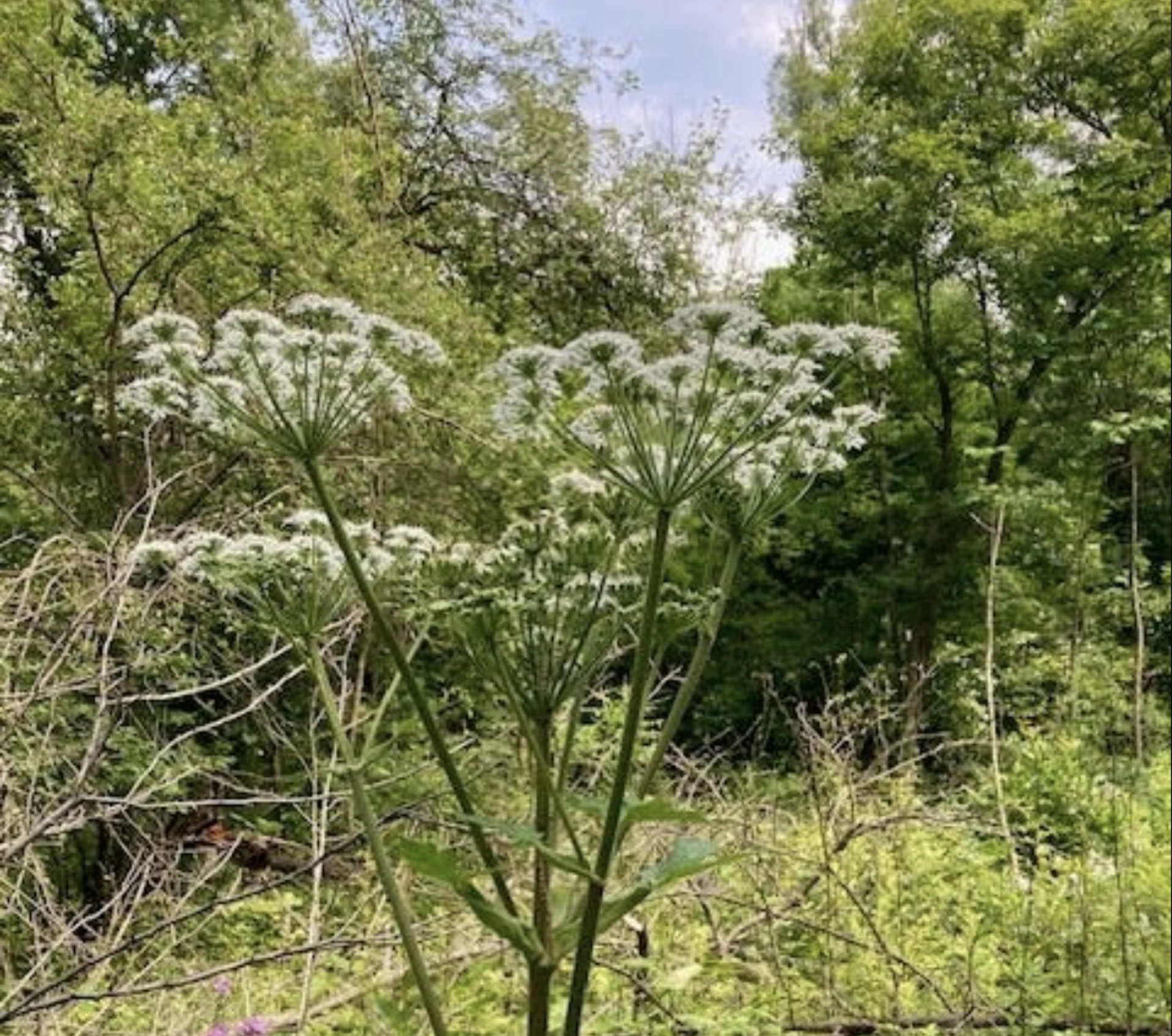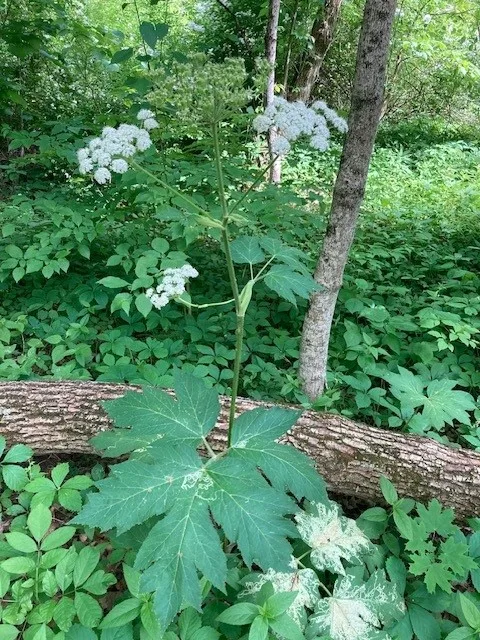
Beware! These dangerous plants are found in Canada
Here are four plants you need to avoid coming into contact with this season
Plants with toxic properties could leave you itchy, burning, and in serious pain.
It’s important to know how to identify these in the wild, so here are 4 plants to look out for.
Giant Hogweed
Hogweed has harmful phototoxic chemicals in it. Invasive species expert Jeff Dickie from Conservation Halton explains that if your skin comes in contact with hogweed “and you don’t wash it off immediately, you start to get blisters.”

Giant hogweed flower head. Appaloosa/Wikipedia Creative Commons. CC BY-SA 3.0.
These blisters can get worse with sunlight exposure and can cause severe burns.
An obvious identification feature is its large size—these plants can grow up to 5.5 metres tall! They typically have white flower heads with seed sources and purple splotches on their stem. Hogweed spreads easily and can establish along roadsides, ditches, and streams.
WATCH: Learn more about the plant that causes 3rd-degree burns
Cow Parsnip
Another plant with phototoxic properties is the cow parsnip. This invasive plant is native to Europe and Asia and looks like a mini version of giant hogweed. The main difference between the two is that this plant does not have the purple colour on the stem and only grows to about 1.5 metres tall. It has three distinct flower heads and tiny hairs on its stem.

Cow parsnips can be identified by their three distinct flower heads and tiny hairs on their stem. (Jeff Dickie, Field Forest Technician/provided)
LEARN MORE: This wild parsnip leads to blistering burns
Poison Ivy
This one should come as no surprise. Poison ivy is a commonly found plant that could cause serious itching and discomfort.
A good way to remember that a plant may be dangerous is by using the phrase “Leaves of three, leave it be.”

Poison ivy vine and leaf shape. (Courtesy of Jeff Dickie, Field Forest Technician/provided)
Poison ivy is an example of a three-leaf warning.
“The leaves are like teardrops shaped with small serrations on them,” Dickie says.
It’s important to note that poison ivy isn’t always found directly on the ground; its vines can actually climb up trees!
WATCH: How to identify poison ivy
RELATED: Painful, itchy, blistering rash. What you need to know about poison ivy
Buckthorn
Another rule of thumb is “don’t munch on a hunch." If ingested, buckthorn berries could cause serious abdominal discomfort in humans and animals. This shrub-like plant has thorns, oval-shaped leaves, and dark-coloured bark. Towards the end of summer, the berries are purple. Jeff Dickie explains, “It has more toxic properties to surrounding plants in an area, so it can alter the nitrogen in soils, and it can also be a gateway for other invasives.”

Buckthorn has thorns, oval-shaped leaves, and dark-coloured bark. (Jeff Dickie, Field Forest Technician/provided)
Jeff says that the best defence against toxic plants is knowing plant identification, but it is important to note that there are many lookalikes in the wild.











